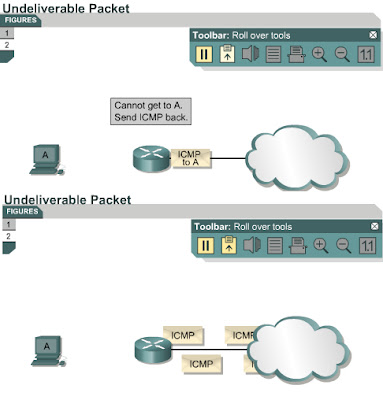Unreachable networks
8.1.4 This page will explain why some networks are unreachable.
Network communication depends on some basic conditions that must be met. First, the TCP/IP protocol must be properly configured for devices that send and receive data. This includes the installation of the TCP/IP protocol and proper configuration of an IP address and subnet mask. A default gateway must also be configured if datagrams are to travel outside of the local network. Second, intermediary devices must be in place to route the datagram from the source device and its network to the destination network. Routers perform this function. A router also must have the TCP/IP protocol properly configured on its interfaces, and it must use an appropriate routing protocol.
If these conditions are not met, then network communication cannot take place. For instance, the sending device may address the datagram to a non-existent IP address or to a destination device that is disconnected from its network. Routers can also be points of failure if a connecting interface is down or if the router does not have the information necessary to find the destination network. If a destination network is not accessible, it is said to be an unreachable network.
Figures and show a router that receives a packet that cannot be delivered. The packet is undeliverable because there is no known route to the destination. Because of this, the router sends an ICMP host unreachable message to the source.
The next page will teach students how to test network reachability



No comments:
Post a Comment